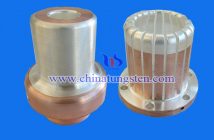After material preparation and injection, the following steps are degreasing and sintering. Degreasing process is also known as forming agent or binder removal, which is the use of physical or chemical methods the added binder (such as alcohol, paraffin and the like) were removed. It needs the longest time of PIM and is the most difficult to control. Improper operation will cause the deformation or uneven component defects of tungsten copper blank, which will affect the final properties of tungsten copper products. The slow rate of degreasing and controlling difficulty has also hampered PIM development, so the related researchers attempt to develop new binder and new degreasing technology.
The common degreasing methods include heat degreasing, solvent degreasing, catalytic degreasing and siphon degreasing, and the siphon degreasing belongs to physical degreasing. As the name suggests is heated by thermal degreasing melting point difference, the binder evaporate escapes. It has broader applicability, cost is relatively low, the operation is simple and convenient, but a longer time is required for thermal degreasing, the production efficiency is low, and in the process is not easily controlled, prone to defects degreasing. Although siphon degreasing has high degreasing rate, the tightness between siphon material and tungsten copper blank can not be guaranteed and has higher cost so it is difficult to be popularized. Catalytic degreasing is a kind of chemical methods, its efficiency is relatively high, a small amount of deformation of the product obtained, but the acid-catalyzed vapor degreasing equipment used in corrosive and will pollute the environment.
Solvent degreasing refers to immersing billet heated in a solvent or solvent vapor, tungsten, copper blank soluble binder components by dissolution - diffusion dissolved in the appropriate solvent, so as to achieve the purpose of removing the binder. It can significantly reduce degreasing time and improve overall productivity; the amount of deformation is relatively small products, component distribution, which is an ideal degreasing powder injection molding method. However, solvent diffuses from outside to inside of tungsten copper blank, has less defects, but the solvent into the internal body, because it may cause excessive swelling of the sample deformation or cracking. After degreasing solvent, generally it needs to be dried to remove the body pores in the green solvent, wherein the remaining adhesive by thermal degreasing process. It also formed a two-step degreasing, namely solvent degreasing + thermal/heat degreasing.




